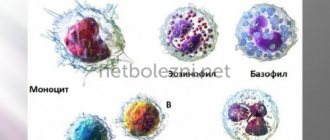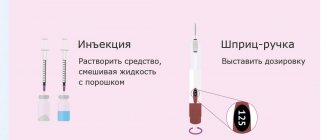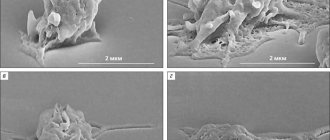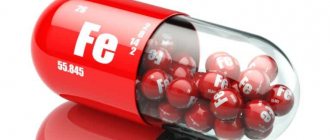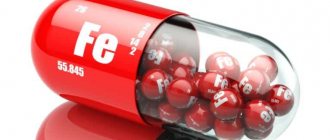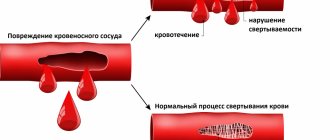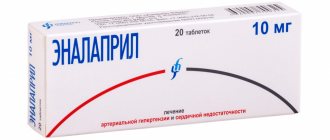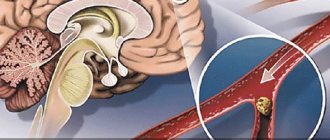Complexes with this research
Monitoring diabetes Monitoring the condition of patients with diabetes (once every 6 months) 1,900 ₽ Composition
Advanced women's anti-aging diagnostics Advanced monitoring of key blood parameters in women aged 40+ 28,680 ₽ Composition
Women's anti-aging diagnostics Monitoring of basic blood parameters in women aged 40+ 12,070 ₽ Composition
IN OTHER COMPLEXES
- Biochemistry of blood. 19 indicators 6,280 ₽
- Advanced anti-aging diagnostics in postmenopause RUB 29,230
- Biochemistry of blood. 13 indicators 3,490 ₽
- Men's check-up No. 1 RUB 18,570
- Advanced male anti-aging diagnostics RUB 33,710
Globulin fractions:
Alpha globulins are normal 10.0-12.0%
Betta globulins 8.0-10.0%
Gamma globulins 15.0-17.0%
• Alpha globulins: 1. Increasing the fraction - during inflammatory processes (parasitic diseases, mycosis, dysbacteriosis). 2. Decrease in fraction – hypofunction of the thyroid gland, pancreatitis.
• Betta globulins: 1.Increasing the fraction - for hepatitis, cirrhosis and other liver damage.
• Gamma globulins: 1.Increasing the fraction in cirrhosis, hepatitis, infectious diseases.
2. Decrease in fraction - 14 days after vaccination, in case of kidney disease, in immunodeficiency states.
Types of proteinograms:
1. Type of acute inflammatory processes
A marked decrease in albumin content and an increased content of alpha globulins, an increase in gamma globulins.
It is observed in the initial stage of pneumonia, pleurisy, acute polyarthritis, acute infectious diseases and sepsis.
2. Type of subacute and chronic inflammation
Decrease in albumin content, increase in alpha and gamma globulins
Observed in late stages of pneumonia, chronic endocarditis, cholecystitis, urocystitis, pyelonephritis
3. Type of nephrotic symptom complex
Decrease in albumin, increase in alpha and beta globulins, moderate decrease in gamma globulins.
Lipoid and amyloid nephrosis, nephritis, nephrosclerosis, cachexia.
4. Type of malignant neoplasms
A sharp decrease in albumin with a significant increase in all globulin fractions, especially beta globulins.
Primary neoplasms of various localizations, metastases of neoplasms.
5. Type of hepatitis
Moderate decrease in albumin, increase in gamma globulins, sharp increase in beta globulins.
For hepatitis, the consequences of toxic liver damage (improper feeding, improper use of medications), some forms of polyarthritis, dermatoses, malignant neoplasms of the hematopoietic and lymphoid apparatus.
6. Type of cirrhosis
Significant decrease in albumin with a strong increase in gamma globulins
7. Type of mechanical (subhepatic) jaundice
A decrease in albumin and a moderate increase in alpha, beta and gamma albumin.
Obstructive jaundice, cancer of the biliary tract and head of the pancreas.
Detailed description of the study
Albumin is a blood plasma protein that, by mass, occupies more than half of all plasma proteins. It performs a number of important physiological functions:
- Maintaining physical and chemical blood parameters: viscosity, pH, oncotic pressure;
- Regulation of circulating blood volume and its balance with intercellular fluid;
- Transport of certain hormones, drugs, fats and their complexes;
- Calcium binding and participation in its metabolism;
- Protein reserve: if there is not enough protein in food, albumin can become its source.
Albumin is synthesized in the liver under the influence of thyroid hormones and growth factors, and is excreted by the kidneys. If too little of it is produced in the liver or if it is excessively excreted in the urine, its plasma concentration decreases. This condition is called hypoalbuminemia.
The causes of low albumin levels can be acute and chronic liver diseases, which affects its synthetic function, kidney pathologies, and insufficient protein intake from food. Hypoalbuminemia can be a manifestation of hormonal diseases, intestinal pathologies and cancer. Regardless of the cause, a decrease in plasma albumin levels manifests itself externally as edema.
Physiologically, this is reflected in the properties of blood and transport functions. For example, the content of free molecules of drugs taken in the blood will increase. This may increase their side effects.
Increases in plasma albumin levels are rare: with dehydration or recent intravenous protein administration.
Anemia, hypertension, hypovitaminosis D: are your kidneys okay?
Not many people know, but the kidneys are not only an excretory organ. It is “here” that vitamin D is transformed into its active form. Erythropoietin is synthesized here, which maintains the level of red blood cells. Renin is formed here, which indirectly affects the “width” of the vessels and, thereby, determines the pressure. And kidney disease has many more signs and consequences than is commonly believed.
"Non-standard" and "classic"
Symptoms of kidney disorders, as already noted, are not only about “urine” and lower back pain. After all, they appear exclusively at the time of acute inflammation in the organ.
In other cases, changes can be much more inconspicuous, the identification of which is possible only through screening. A special, distinctive feature of such disorders is resistance to traditional therapy.
Signs may include:
1. Jumps in blood pressure that are difficult to correct.
After all, renal renin activates angiotensin, which sharply constricts blood vessels and increases blood pressure.
Among other things, angiotensin irritates the thirst center in the brain, literally “forcing” you to drink more, thereby increasing the volume of the liquid part of the blood and contributing to an even greater increase in pressure.
And this “pressure” does not decrease after taking “conventional” medications, creating the risk of a critical increase.
2. Persistent anemia (deficiency of red blood cells)
due to a lack of renal erythropoietin, which stimulates the bone marrow to synthesize red blood cells. At the same time, the level of iron, vitamins B12 and B9, the deficiency of which is the main cause of anemia, remains normal.
3. Symptoms of D-deficiency and calcium disorders.
Decreased immunity, distorted immune reactions, caries, osteoporosis, rickets, muscle cramps, weakened memory and concentration, mood instability with a tendency to depression and other symptoms occur against the background of normal levels of total vitamin D and its fractions (25-hydroxyergocalciferol and 25-hydroxycholecalciferol) .
And a decrease in the level of 1,25-dihydroxycholecalciferol (calcitriol), the only active form of vitamin D, which is formed in the kidneys under the influence of parathyroid hormone and has all the effects inherent in the vitamin, can “give away” the renal origin of the symptoms.
Of course, kidney problems can also manifest themselves with more “classical” signs, such as urinary problems, swelling and general weakness. Indeed, with renal failure, toxic metabolic products accumulate in the body, as well as metabolites of drugs and other “harmful” substances.
Simple and affordable
Kidney screening, in addition to a urine test, should also include some blood parameters, including:
- Creatinine and urea are products of protein metabolism, a slight increase in the level of which is acceptable during active physical activity and during fasting. Whereas a significant increase is a sign of developing renal failure;
- Uric acid is a breakdown product of purine bases (DNA, RNA), an increase in which leads to the accumulation of urates and the development of gout. And the reason for the increase may be a violation of the excretory function of the kidneys, as well as a number of serious diseases;
- Albumin is one of the protein fractions synthesized in the liver, which is normally unable to penetrate the kidney filter. Therefore, a lack of albumin in the blood may be an early sign of kidney pathologies. However, such an analysis must be evaluated in combination with other indicators, as well as a blood test (the appearance of protein);
- Clinical blood test with leukocyte formula - helps to identify renal inflammation (which in the early stages may not have clinical signs), as well as a lack of red blood cells (anemia). Which, as already noted, may be a consequence of erythropoietin deficiency.
AST
AST (AST) or aspartate aminotransferase is a cellular enzyme involved in the metabolism of amino acids. AST is found in the tissues of the heart, liver, kidneys, nervous tissue, skeletal muscles and other organs.
The norm of AST in the blood is 1.6-6.7 IU
1. An increase in AST in the blood is observed if there is a disease in the body:
a) viral, toxic hepatitis
b) acute pancreatitis
c) liver tumors
d) physical activity
e) heart failure.
f) for skeletal muscle injuries, burns, heat stroke.
2. Decrease in the level of AST in the blood due to severe illness, liver rupture and vitamin B6 deficiency.
ALT
ALT (ALT) or alanine aminotransferase is a liver enzyme that is involved in the metabolism of amino acids. ALT is found in the liver, kidneys, heart muscle, and skeletal muscles.
When the cells of these organs are destroyed, caused by various pathological processes, ALT is released into the blood of the animal's body. ALT norm in the blood of cats and dogs: 1.6-7.6 IU
1. Increased ALT is a sign of serious diseases:
a) toxic liver damage
b) cirrhosis of the liver
c) liver tumor
d) toxic effect on the liver of drugs (antibiotics, etc.)
e) heart failure
f) pancreatitis
g) shock
h) burns
i) trauma and necrosis of skeletal muscles
2. A decrease in ALT levels is observed when:
a) severe liver diseases - necrosis, cirrhosis (with a decrease in the number of cells synthesizing ALT)
b) vitamin B6 deficiency.
Urea
Urea is an active substance, the main breakdown product of proteins. Urea is produced by the liver from ammonia and is involved in the process of concentrating urine.
During the synthesis of urea, ammonia, a very toxic substance for the body, is neutralized. Urea is excreted from the body by the kidneys. The normal level of urea in the blood of cats and dogs is 30.0-45.0 mg%
1. Increased urea in the blood is a symptom of serious disorders in the body:
a) kidney diseases (glomerulonephritis, pyelonephritis, polycystic kidney disease),
b) heart failure,
c) obstruction of urine outflow (bladder tumor, prostate adenoma, bladder stones),
d) leukemia, malignant tumors,
e) severe bleeding,
f) intestinal obstruction,
g) shock, fever,
h) burns.
An increase in urea occurs after physical activity, due to the intake of androgens and glucocorticoids.
2. Analysis of urea in the blood will show a decrease in urea levels in liver disorders such as hepatitis, cirrhosis, hepatic coma. A decrease in urea in the blood occurs during pregnancy, phosphorus or arsenic poisoning.
Alkaline phosphatase
Alkaline phosphatase is involved in the metabolism of phosphoric acid, breaking it down from organic compounds and promotes the transport of phosphorus in the body. The highest levels of alkaline phosphatase are in bone tissue, intestinal mucosa, placenta and mammary gland during lactation.
The normal level of alkaline phosphatase in the blood of dogs and cats is 8.0-28.0 IU/l. Alkaline phosphatase affects bone growth, so its content is higher in growing organisms than in adults.
1. Increased alkaline phosphatase in the blood can be caused by
a) bone disease, including bone tumors (sarcoma), cancer metastases to bone
b) hyperparathyroidism
c) lymphogranulomatosis with bone lesions
d) osteodystrophy
e) liver diseases (cirrhosis, cancer, infectious hepatitis)
f) tumors of the biliary tract
g) lung infarction, kidney infarction.
h) lack of calcium and phosphates in food, from an overdose of vitamin C and as a result of taking certain medications.
2.Decreased alkaline phosphatase level
a) with hypothyroidism,
b) bone growth disorders,
c) lack of zinc, magnesium, vitamin B12 or C in food,
d) anemia (anemia).
e) taking medications can also cause a decrease in alkaline phosphatase in the blood.
Pancreatic amylase
Pancreatic amylase is an enzyme involved in the breakdown of starch and other carbohydrates in the lumen of the duodenum.
Pancreatic amylase norms are 35.0-70.0 G\hour * l
1.Elevated amylase is a symptom of the following diseases:
a) acute, chronic pancreatitis (inflammation of the pancreas)
b) pancreatic cyst,
c) tumor in the pancreatic duct
d) acute peritonitis
e) diseases of the biliary tract (cholecystitis)
f) renal failure.
2. A decrease in amylase content can occur with pancreatic insufficiency, acute and chronic hepatitis.
When should you take an Albumin test?
- Diagnosis of liver diseases with impaired synthetic function;
- Assessment of the severity of liver cirrhosis (Child-Pugh scale);
- Detection of kidney pathologies;
- Irrational diet, insufficient consumption of protein foods, fasting (assessment of nutritional status);
- Malabsorption of proteins in the intestine: short bowel syndrome, Crohn's disease;
- Identifying the cause of local or widespread edema;
- Condition after burns, to assess albumin loss;
- Infectious, rheumatological, oncological and endocrine diseases that may be associated with hypoalbuminemia.
